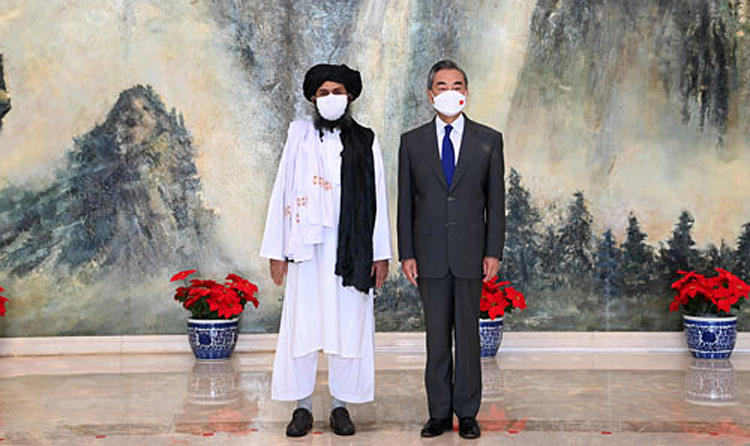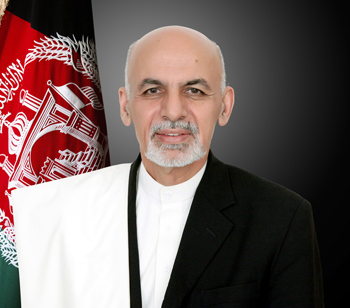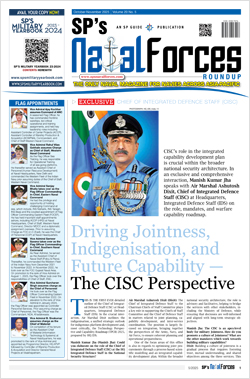INDIAN ARMED FORCES CHIEFS ON OUR RELENTLESS AND FOCUSED PUBLISHING EFFORTS

The insightful articles, inspiring narrations and analytical perspectives presented by the Editorial Team, establish an alluring connect with the reader. My compliments and best wishes to SP Guide Publications.

"Over the past 60 years, the growth of SP Guide Publications has mirrored the rising stature of Indian Navy. Its well-researched and informative magazines on Defence and Aerospace sector have served to shape an educated opinion of our military personnel, policy makers and the public alike. I wish SP's Publication team continued success, fair winds and following seas in all future endeavour!"

Since, its inception in 1964, SP Guide Publications has consistently demonstrated commitment to high-quality journalism in the aerospace and defence sectors, earning a well-deserved reputation as Asia's largest media house in this domain. I wish SP Guide Publications continued success in its pursuit of excellence.
- Global Partners Urged to Tap India's Shipbuilding Potential: Rajnath Singh at Samudra Utkarsh
- All about HAMMER Smart Precision Guided Weapon in India — “BEL-Safran Collaboration”
- India, Germany deepen defence ties as High Defence Committee charts ambitious plan
- G20 Summit: A Sign of Global Fracture
- True strategic autonomy will come only when our code is as indigenous as our hardware: Rajnath Singh
- India–Israel Joint Working Group Meeting on defence cooperation to boost technology sharing and co-development
Geopolitical Shifts Could Unfold
Post T-Afghanistan
China is entering this space created by the withdrawal of US troops. It will like to swiftly maneuver in order to gain significant advantage towards solidifying its continental strategy driven by BRI.
 |
The Author is former Chief of Integrated Defence Staff. A naval aviator of fighter stream, he has flown over 2700 hours and steered naval aviation acquisition as the Assistant Chief of Naval Staff. He retired in 2014 as the Flag Officer Commanding-in-Chief of the Western Naval Command. |

Swift occupation of President Ghani’s Afghanistan by Taliban has surprised some but those who know Afghanistan’s internal dynamics have been firmly forecasting the likely path of least resistance taken nowby ANSF. It is not because they were not capable of resistance or were outmaneuvered across Afghanistan but the fatigue of being in a state of conflict for so long, or may be, a well planned decision. There was and is a desire for peace amongst citizen who didn’t wish to be on tenterhooks if uncertainties persist. The state of governance was always questionable in Afghanistan which became even more fragile post US decision of withdrawal of its troops. Then there was also the question about legitimacy of Ghani government. Now the world may witness the shifting sands of geopolitical uncertainties in the region since Talibanisation would impact Afghanistan’s near/extended neighborhood and not remain confined to its geographical boundaries.

The state of governance was always questionable in Afghanistan which became even more fragile post US decision of withdrawal of its troops
China is entering this space created by the withdrawal of US troops. It will like to swiftly maneuver in order to gain significant advantage towards solidifying its continental strategy driven by BRI. It’s desire to transport trade to Eurasian landmass would’ve to address a number of issues. In the present context support of Russia is very crucial. However, any adverse influence of Taliban on the population of neighboring Central Asian Republics which are largely Islamic will not be acceptable to Russia given that its experience of Chechnya has had lasting impact on President Putin. An Islamic Republic in Afghanistan under the control of radical Taliban has the potential of spilling northwards. Uyghurs in Xinjiang have roots in Uzbekistan/Tajikistan and that has also been a matter of concern to China.
Any adverse influence of Taliban on the population of neighboring Central Asian Republics which are largely Islamic will not be acceptable to Russia
China has been assured by Taliban leadership that it would not permit Al Qaeda to encourage Uyghurs to ferment turbulence in Xinjiang. One of the reasons of Taliban leadership’s visit to China and their well publicised photograph with Foreign Minister Wang Yei was this assurance. However, how much will the Taliban leadership stick to their promises and for how long is still a matter of conjecture. What also worries China is Pak ISI’s close network with Al Qaeda and splinters of Taliban, which are firmly under its control, training East Turkestan Islamic militants and their launch into Xinjiang autonomous region.
Larger picture for China is that its BRI project, of which China Pakistan Economic Corridor is a part, routing through CAR into Eurasia will remain susceptible tounstable Afghanistan, resistance by Baloch nationalist in Pakistan and uncertain Iran Afghanistan relations (due to Hazara Taliban friction). China’s exploration into its continental strategy is prone to these uncertainties.
China has been assured by Taliban leadership that it would not permit Al Qaeda to encourage Uyghurs to ferment turbulence in Xinjiang
Another question mark will be Iranian equation with the T-AFGHANISTAN leadership. Should the Taliban launch any offensive on Shia Hazaras in Navroz province, Iran will be drawn into the existing instability. Iran’s decision to recognise T-Afghanistan will be driven by this factor, though Iran has been in dialogue with some factions of Taliban operating from Iranian border. Iranian involvement in Afghanistan has the potential of drawing Saudi Arabia/UAE in the chaos which could worry both China and Pakistan.
Iranian involvement in Afghanistan has the potential of drawing Saudi Arabia/UAE in the chaos which could worry both China and Pakistan
In the overall analysis it appears that China’s desire to replace the US from existing world order is driving it towards achieving, both, global maritime superiority and domination of continental narrative through its BRI. Will it succeed in becoming a superpower of the world replacing the United States is quite unlikely given the uncertainties in the region. China is a new entrant on modern day geopolitical landscape and its experience is limited to dealing with relatively smaller countries with settled systems of governance. Dealing with states in the Gulf and Central Asia will have different and complex set of challenges which China has to deal with.





